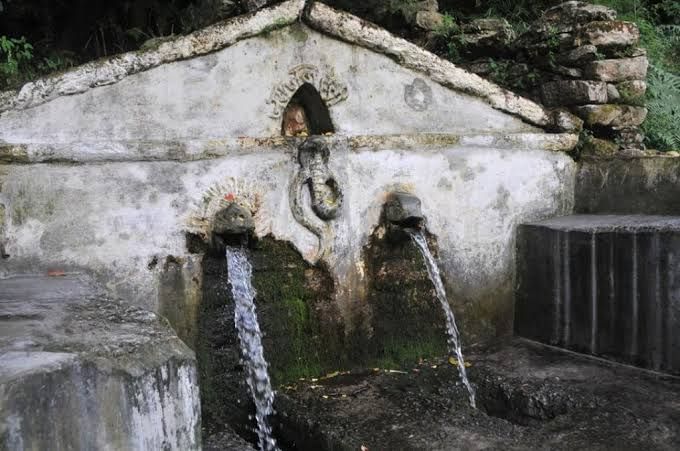3 Social Values That Cauvery Calling is Reviving
In a riveting article published in Swarajya, Ajay Rastogi describes the three social values that Cauvery Calling is trying to revive and how they are relevant to restore our ecology to its natural state.

Ajay Rastogi: I think the campaign to rejuvenate river Cauvery is a beautiful approach. When we do our part to restore a little bit of the tree cover and flora, nature will also help us. Revival of the biodiversity will take place.
As the bees and birds come back to pollinate and disperse more seeds, and as the soil becomes more fertile, this will naturally multiply the work that we are doing in terms of strengthening the soil’s capacity to hold water. Once that ecological balance is in place, more will start to happen.
Traditionally, people had a deeper understanding of their connectedness to the natural world. We used to manage our landscape based on very fundamental value systems. In a way, I see that Cauvery Calling is trying to revive these same values.
First is reciprocity. When we take from nature, it is our responsibility to take care and give back to nature.
Second is equilibrium. As reciprocity happens, there is considerable harmony and equilibrium of services, of give-and-take, between what humanity needs and how nature is flourishing.
In the modern parlance of ecosystem service, it seems as if there is more extraction than replenishment. So I think that Cauvery Calling is really deepening the discourse, action and commitment of humanity towards reestablishing that balance.
Finally, solidarity. We are now coming together to support the farming community who has been so far marginalized because people far away do not fully comprehend how much of work and skill is involved in tilling the lands.
We are not only working towards the economic empowerment of the farming community but also giving them the due respect deserving of the annadata — producer of food. Farmers are the ones who face the brunt of environmental degradation of no water, poor fertility of soil, and no market for their little quantities of produce.
Subscribe
So Cauvery Calling is also about expressing solidarity with not only the farming community but the fishermen and forest communities. When we revive the ecology, economics and the cultural traditions, the rich tradition will nurture all of us.
These traditions are not meaningless rituals. They are connected in far deeper ways than we can understand. For example, the naulas (fresh water springs) are very deeply related to the ecosystem and to the landscape of the mountainous regions where I come from.
They’re essentially infiltration wells, which are fed by innumerable capillaries from the soil as the roots of the trees retain the rainwater. Naulas in the Kumaon region of Uttarakhand, Himalayas, are the main source for drinking water.
Rich traditions are associated with naulas and they are revered. Many of these springs are covered by extensive structures, almost like temples, making them architectural masterpieces in their own right.


Many initiation ceremonies would take place at these naulas in olden times when the springs were alive and full. The trees in the landscape around these naulas are very important for water integration in the soil so that groundwater may be recharged.
These traditions are alive; however, there is a lot of transition in tradition with urbanization. So, if a naula has dried up, people go to another water-point or in an urban center, where there is no spring or running water, they will still do the ceremony but at the water tap.
However, with this kind of transition, the significance of the tradition and the reverence for nature melts away. We used to have what we refer to as jhad lagna. It means for seven to ten days, it will constantly drizzle at a very slow pace. That drizzle used to revive a lot of springs as the water infiltrates and percolates down in the soil.
But now that drizzling has stopped due to climate change. Instead, we get intense rainfall — lot of rain just for a few hours and of course, most of it is not held in the ground. It flows away carrying the soil with it. One of the reasons for forest fires is because we are not getting adequate rainfall in the wintertime. When there is a long, dry winter spell, then the forest floor is so dry that it catches fire very easily. So, a lot of things are interrelated and definitely affect the water cycle.
We came across a case study while drafting the Rally for Rivers policy recommendations about a micro-watershed in the Gagas basin. Thanks to the afforestation efforts by the village self-help groups — mostly women — 80 per cent of the naulas were revived in about 10 years’ time.
This will definitely bring up groundwater levels which feed rivers in the region. So it's quite an ecologically integrated way of looking at the ecosystem.
This is why the Cauvery Calling approach is comprehensive. It looks at communities, livelihoods, ecosystem, water tables, trees — because all of these are interconnected.
If we meddle with one aspect without understanding the consequences, we will end up in the situation where we find ourselves today — alarming water depletion levels and a very real threat to food and water security.
I’m certain that with the effort, intensity and commitment of everyone, as well as the inspiration that Sadhguru provides to all of us, this endeavor will flourish.
Cauvery Calling is a first of its kind campaign, setting the standard for how India’s rivers – the country’s lifelines – can be revitalized. Visit: CauveryCalling.org or call 80009 80009. Contribute to Cauvery Calling. #CauveryCalling.
Editor’s Note: This article first appeared in Swarajya.




